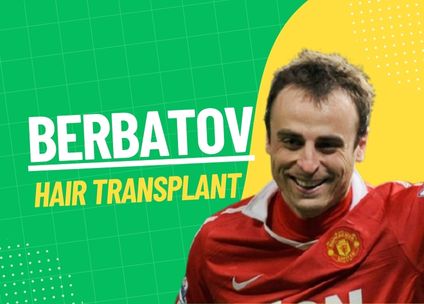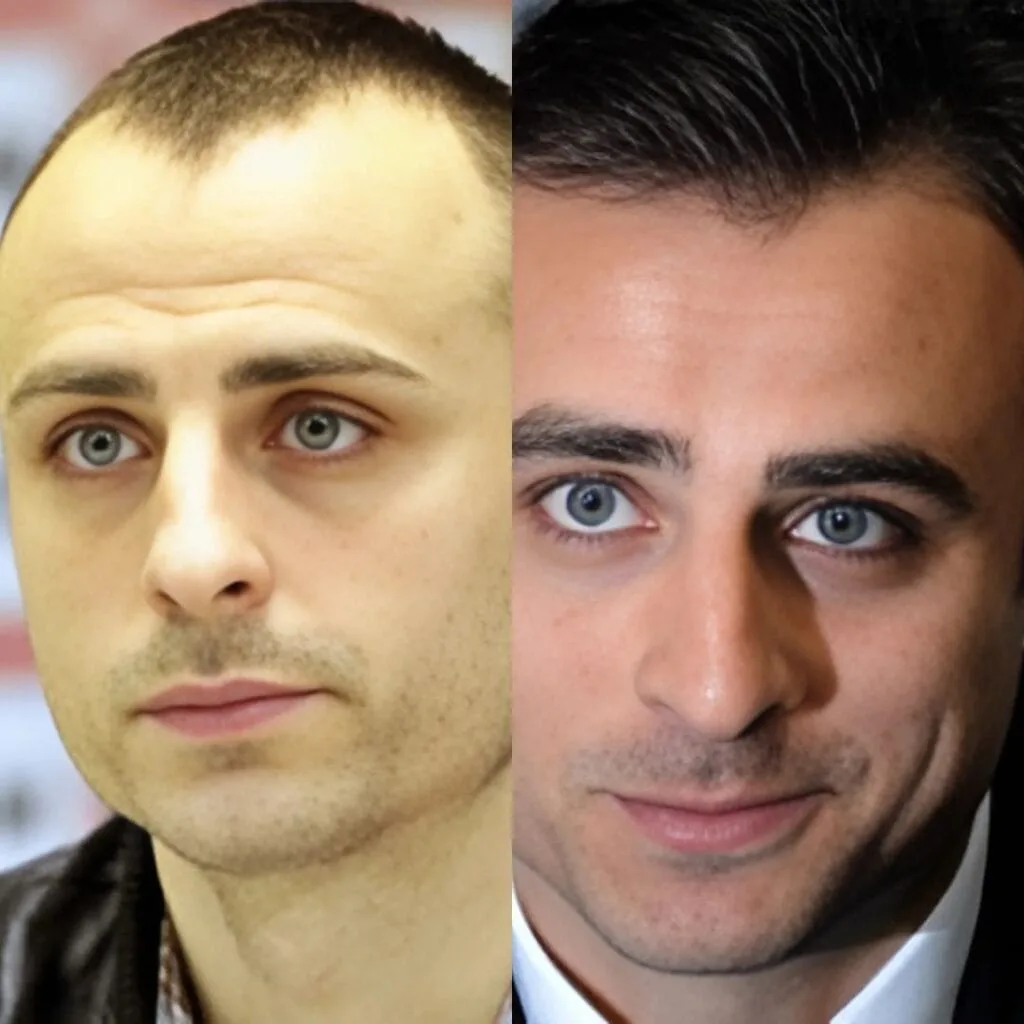Table of Contents
A Quick Note on Sources and Claims
Discussions about celebrity treatments are often based on public appearances and media speculation. This article aims to be informative and careful: we won’t assert that any individual—Dimitar Berbatov or others—definitively had surgery without a direct statement. Instead, we’ll explain what observers typically point to and how hair transplantation works in general.
Why Footballers’ Hair Becomes a Talking Point
Performance, branding, and constant cameras
Elite players live under high-definition scrutiny. That’s why terms like “Dimitar Berbatov footballers hair transplants” trend: fans compare match photos, media interviews, and ambassador appearances, looking for changes in density, hairline shape, and styling.
What People Typically Look For (Without Jumping to Conclusions)
Visual cues that can suggest a transplant—but aren’t proof
-
Hairline geometry shifts: A subtly lowered or more symmetrical hairline.
-
Density in specific zones: Crown thickening or frontotemporal filling that resists typical male-pattern thinning.
-
Styling changes: Shorter crops or textured styles that showcase (or conceal) density improvements.
-
Temporary signs: Short phases of redness, micro-stubble, or slight “pebbling” visible only in close-ups.
Reminder: Lighting, haircut choices, grooming fibers, or non-surgical therapies can mimic these effects. None of these indicators alone confirm a procedure.
How Modern Hair Transplantation Works (The Plain-English Version)
FUE and DHI are today’s go-to methods
-
FUE (Follicular Unit Extraction): Individual grafts are harvested—usually from the donor zone at the back/sides—and implanted into thinning areas.
-
DHI (Direct Hair Implantation): A variation where implanter pens place follicles directly, aiming for precise angle and density.
-
Design matters: Surgeons plan hairline shape, density per cm², and growth direction to fit face shape and future-proof the result.
-
Scarring: Tiny dot scars are typically hidden by short hair; no linear strip scar with FUE/DHI.
The Realistic Timeline Most Patients Experience
From day 1 to final result
-
Days 1–10: Visible micro-stubble; scabs shed.
-
Weeks 3–8: Shedding phase—transplanted hairs fall (the follicles remain).
-
Months 3–6: Early regrowth; texture can be wiry or uneven at first.
-
Months 6–9: Noticeable thickening; styling becomes easier.
-
Months 12–15: Maturation; hair strands thicken and look more natural.
“Dimitar Berbatov Hair Transplantation Before and After”: What That Phrase Should Mean
Interpreting comparisons like a pro
When people search “Dimitar Berbatov hair transplantation before and after,” they’re usually comparing photos from different seasons or appearances. A fair comparison requires:
-
Consistent angles and lighting (front, three-quarter, crown).
-
Similar hair length and styling to avoid optical illusions.
-
A long enough interval (9–12 months) to judge maturation, not just early growth.
-
Context about non-surgical aids (camouflage fibers, minoxidil, low-level laser therapy), which can temporarily boost the look of density.
What Makes a “Natural” Result (Celebrity or Not)
The three pillars
-
Conservative hairline design: Age-appropriate placement beats an overly low, “teenage” look.
-
Donor management: Limited grafts must be allocated wisely for lifelong coverage.
-
Angle, direction, and micro-irregularity: Slight irregularities at the hairline edge mimic nature.
Why Athletes Might Consider It (In General Terms)
Career longevity and public persona
-
On-camera confidence: Media duties, endorsements, and punditry extend long after retirement.
-
Low downtime options: FUE/DHI favor quicker returns to daily life.
-
Predictable styling: Stable hairline framing can simplify grooming for events and shoots.
Cost, Clinics, and Quality: What Informed Patients Check
A practical checklist
-
Surgeon-led planning: Confirm the surgeon—not an assistant—designs your case and sites the incisions.
-
Portfolio depth: Look for consistent, high-resolution cases of hairlines and crowns, not just “best hits.”
-
Density transparency: Ask about graft counts per zone and realistic coverage in one session.
-
Aftercare clarity: Written guides for washing, shedding expectations, and when sport/gym resumes.
FAQs About the Berbatov Topic (Framed Responsibly)
Did Dimitar Berbatov have a hair transplant?
Why is “Dimitar Berbatov footballers hair transplants” a common search?
How soon would a public figure see visible improvement?
Bottom Line
Conversations around Berbatov hair transplant and Dimitar Berbatov hair transplant reflect broader curiosity about how modern techniques can create natural-looking density and framing. Whether discussing a football legend or any private individual, the smartest approach is the same: avoid unverified claims, understand the medical process, and judge “before & after” with consistent, context-aware comparisons.






